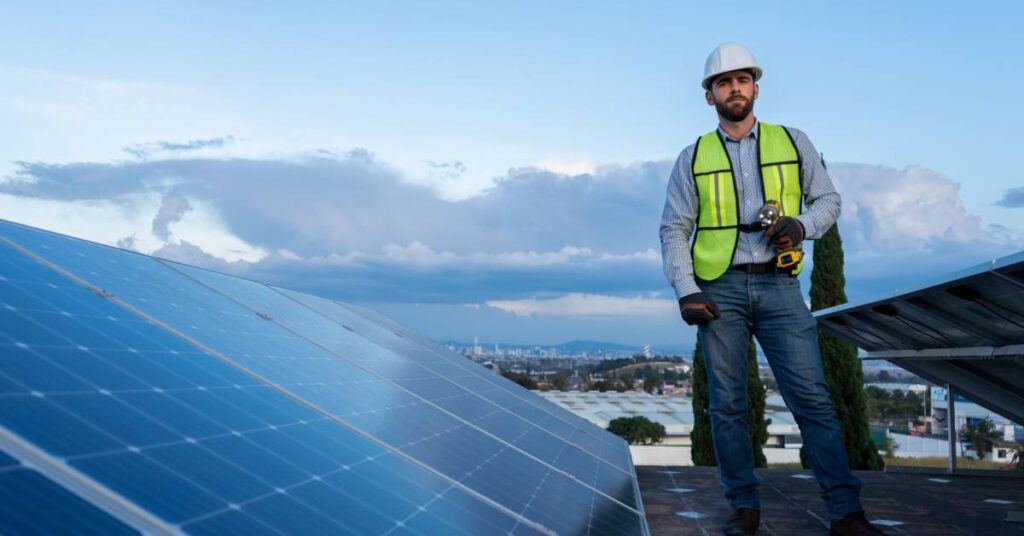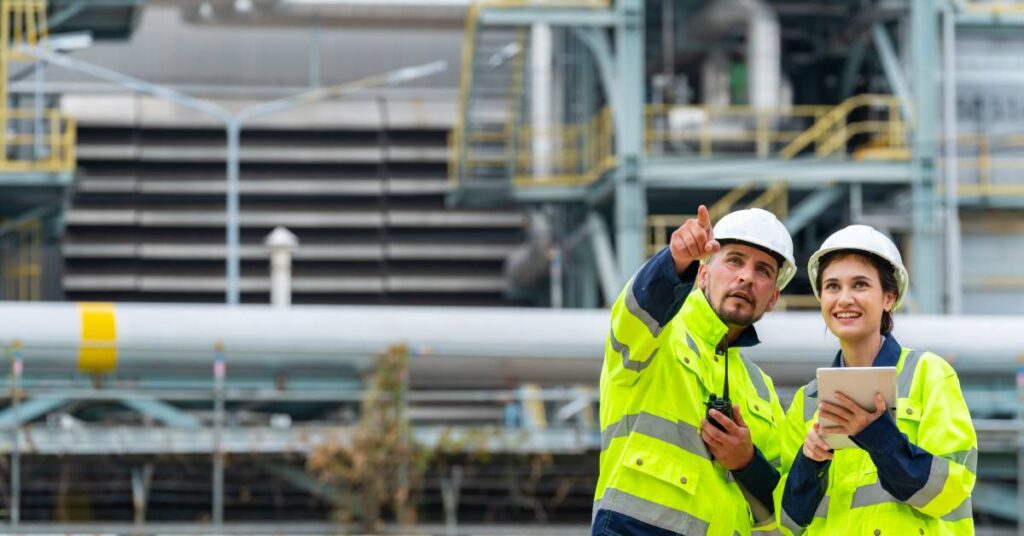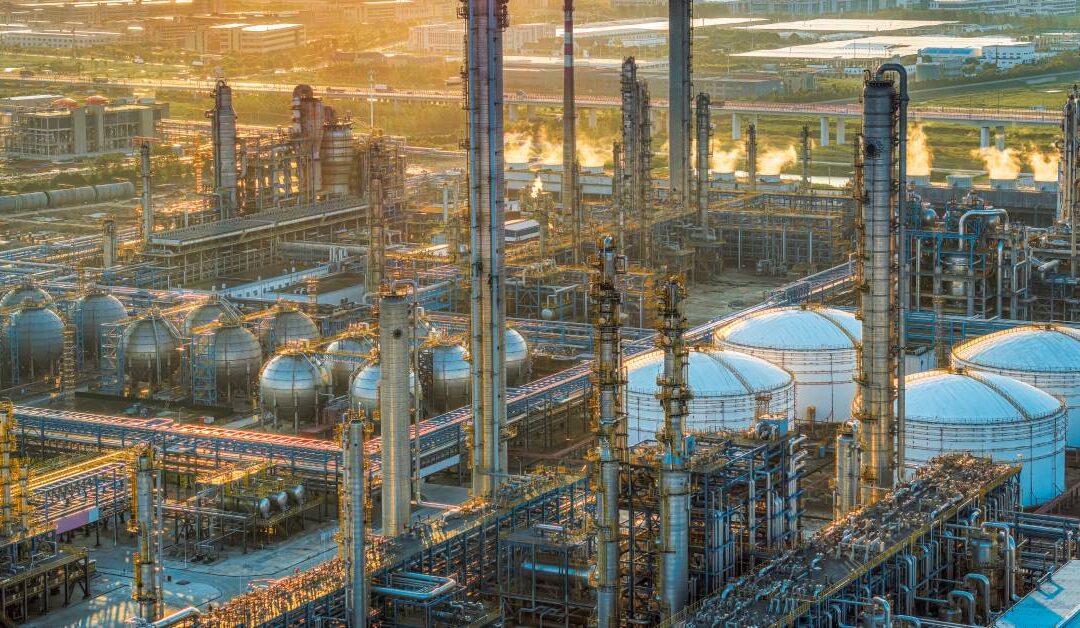As one of the key contributors to global emissions, the manufacturing industry has the power to improve and fight against climate change. However, this initiative is easier said than done. Fortunately, we have six great ways manufacturers can reduce emissions without affecting productivity.
What Are Emissions?
Emissions refer to gases or particles that humans or natural processes release into the air. Manufacturing creates emissions by burning fossil fuels for energy, running chemical processes, and managing waste. Common examples include carbon dioxide (CO2), methane (CH4), and nitrous oxide (N2O). These gases trap heat in the atmosphere and accelerate climate change.
Transition to Renewable Energy Sources
Traditional fossil fuel energy sources generate high amounts of carbon emissions, but renewable options like solar, wind, and hydropower offer cleaner alternatives. Manufacturers can mount solar panels on unused factory roof space to harness energy directly from sunlight. Wind turbines in areas with consistent wind speeds can generate electricity; hydropower systems, particularly for facilities near water sources, provide another clean energy option.
For manufacturers lacking the ability to produce renewable energy themselves, partnerships with energy suppliers are a viable solution. Many suppliers offer clean energy packages that allow businesses to transition away from fossil fuels.
Power Purchase Agreements (PPAs), for instance, allow companies to commit to energy from wind or solar farms without direct investment in infrastructure. These collaborations enable immediate emission reductions while satisfying environmental standards.

Invest in Carbon Capture and Storage (CCS) Technologies
Carbon capture and storage (CCS) technologies provide manufacturers with a powerful solution to manage emissions on-site. CCS captures carbon dioxide before it escapes into the atmosphere, targeting emissions at its source.
Understanding the Carbon Capture Process
Manufacturers rely on heavy machinery, chemical processes, and large-scale power systems that emit substantial CO2 during operations. CCS systems capture this CO2 at emission points, such as smokestacks or exhaust systems, through chemical or physical processes. Then, the carbon dioxide undergoes pressurization and transport for storage or reuse.
Storage Solutions for Captured Carbon
Capturing CO2 is only the first step. Long-term storage solutions allow manufacturers to sequester emissions safely underground, typically in rock formations or empty oil fields. This prevents greenhouse gases from re-entering the atmosphere.
Alternatively, captured carbon can help produce industrial materials, such as biofuels. This creates an added layer of sustainability through repurposing emissions into new products.
Integration With Industrial Processes
High-emission industries, such as cement and steel production, can integrate CCS directly with equipment. For example, large-scale CCS units can target furnaces and kilns where carbon emissions occur most intensely. This seamless integration ensures that companies in fast-paced operations maintain efficiency while reducing their environmental impact.
Start Solvent Recycling Programs
Solvent recycling is a great way for manufacturers to reduce emissions. Many industrial processes, such as painting, degreasing, and chemical manufacturing, rely on solvents, which can contribute to hazardous waste emissions if companies don’t properly manage them.
Manufacturers can utilize solvent recovery systems to make chemicals reusable. Distillation is one of the most effective methods, separating contaminants like dirt, oil, or water from the solvent. Advanced closed-loop recycling systems allow solvents to flow back into the production line.
Environmental and Cost Benefits
Solvent recycling decreases reliance on raw material purchases and lowers hazardous waste disposal costs. Beyond the savings, the reduction in emissions benefits global sustainability goals and positions manufacturers as environmentally responsible industry players.
For example, a company actively recycling solvents can reduce its greenhouse gas contributions from producing and transporting new solvents. This, in turn, helps both the planet and their financial bottom line.
Optimize Logistics and Supply Chains
Every stage, from sourcing materials to delivering finished goods, contributes to a company’s overall environmental footprint. By incorporating sustainable practices, manufacturers can reduce emissions while improving operational efficiency.
Transportation is the main contributor to logistics-related emissions, with traditional diesel trucks and fossil-fueled fleets being the leading culprits. Transitioning to electric-powered delivery vehicles can reduce these emissions. Hydrogen-powered trucks also provide solutions, especially for long-distance hauls. Manufacturers can also explore co-loading with other companies to maximize vehicle capacity and reduce trips.
Sustainable Sourcing Practices
Manufacturers sourcing materials locally can eliminate emissions from long-distance shipping. For instance, a packaging manufacturer might collaborate with a nearby supplier for recycled paper products instead of importing materials from overseas. Building strong relationships with suppliers who share emissions reduction goals strengthens efforts across the board.
Sustainable Warehousing Solutions
Warehousing practices also influence emissions throughout supply chains. Energy-efficient lighting, such as an LED system, consumes less power and reduces space cooling needs. Expanding the use of renewable energy in warehouses through rooftop solar installations further reduces electricity demand. Implementing automated inventory systems enables better space utilization and reduces unnecessary energy expenditures.
Leverage Smart Manufacturing and IoT Technology
Implementing smart manufacturing and IoT technology allows businesses to reduce emissions without sacrificing operation efficiency. Connected devices, automation, and advanced analytics provide manufacturers with the tools to streamline their processes.
These advancements create opportunities to identify inefficiencies, reduce waste, and optimize energy consumption across multiple facets of production. IoT devices monitor equipment and processes in real time. In particular, sensors track energy usage and emissions throughout the production line, helping manufacturers determine areas that need improvement. For instance, if a section of machinery consumes excess electricity, IoT devices can flag this fact.
Predictive Maintenance and Automation
Unplanned equipment breakdowns lead to wasteful energy consumption and downtime. Predictive maintenance addresses this issue by using IoT sensors to detect early signs of machinery wear or failure. For example, vibration monitors can predict when motors require repairs, enabling teams to intervene before malfunctions occur.
Additionally, automation technologies reduce material waste and unnecessary energy use. For instance, automated conveyor systems move input materials through assembly lines with precision and decrease excess waste. Additionally, robotic systems enhance production accuracy, preventing the overuse of raw materials and avoiding energy-extensive rework processes.
Data-Driven Optimization in Energy Use
Smart systems with IoT analytics track energy consumption during various production stages. Using this data, manufacturers can optimize schedules and processes to lower electricity needs during peak hours. For example, factories may adjust schedules for electricity-intensive activities to take advantage of low-demand periods, which supports cost reduction and emissions goals.

Pursue Green Certifications and Partner With Environmental Organizations
Certifications such as ISO 14001 and Carbon Trust Standards offer global recognition for sustainable manufacturing practices. These certifications verify a company’s adherence to specific environmental standards, such as energy efficiency and waste management goals.
Organizations such as the World Resources Institute or local green advocacy groups provide manufacturers with guidance, shared research, and actionable solutions specific to their sector. For instance, joining initiatives that focus on industrial decarbonization connects businesses with experts who help implement low-carbon strategies.
Publicizing certifications and partnerships enhances brand reputation and secures stakeholder confidence. Companies that are part of green projects stand out to consumers, industry peers, and environmental regulators.

